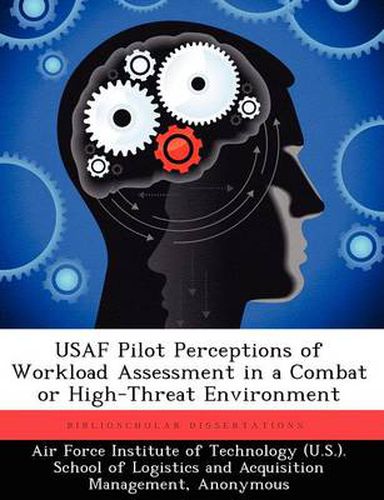Readings Newsletter
Become a Readings Member to make your shopping experience even easier.
Sign in or sign up for free!
You’re not far away from qualifying for FREE standard shipping within Australia
You’ve qualified for FREE standard shipping within Australia
The cart is loading…






This title is printed to order. This book may have been self-published. If so, we cannot guarantee the quality of the content. In the main most books will have gone through the editing process however some may not. We therefore suggest that you be aware of this before ordering this book. If in doubt check either the author or publisher’s details as we are unable to accept any returns unless they are faulty. Please contact us if you have any questions.
This study analyzed the self-reported survey responses of 219 Air Force Pilots concerning their perceptions of workload assessment in a combat or a high-threat environment. The first objective of this study was to determine and compare the combat workload factors of varying importance in combat workload assessment by aircraft and mission type flown. The second objective was to examine the pilots’ perception of combat mission in-flight workload. A stepwise regression model to predict the pilots’ perceptions of in-flight workload using pilots’ characteristic data was explored. Research conclusion varied among aircraft types. Combat workload items indicated, as distractingly important were similar for all aircraft types, while items in lower level of importance were impacted by aircraft type. Mean Combat Workload (CWL) scores of pilots from each aircraft type were not significantly different. Overall, it was concluded that surveying pilots who had flown in combat or high-threat environments provided useful responses to assess pilot workload; however, findings based on subjective assessments, provide tentative grounds for further research.
$9.00 standard shipping within Australia
FREE standard shipping within Australia for orders over $100.00
Express & International shipping calculated at checkout
This title is printed to order. This book may have been self-published. If so, we cannot guarantee the quality of the content. In the main most books will have gone through the editing process however some may not. We therefore suggest that you be aware of this before ordering this book. If in doubt check either the author or publisher’s details as we are unable to accept any returns unless they are faulty. Please contact us if you have any questions.
This study analyzed the self-reported survey responses of 219 Air Force Pilots concerning their perceptions of workload assessment in a combat or a high-threat environment. The first objective of this study was to determine and compare the combat workload factors of varying importance in combat workload assessment by aircraft and mission type flown. The second objective was to examine the pilots’ perception of combat mission in-flight workload. A stepwise regression model to predict the pilots’ perceptions of in-flight workload using pilots’ characteristic data was explored. Research conclusion varied among aircraft types. Combat workload items indicated, as distractingly important were similar for all aircraft types, while items in lower level of importance were impacted by aircraft type. Mean Combat Workload (CWL) scores of pilots from each aircraft type were not significantly different. Overall, it was concluded that surveying pilots who had flown in combat or high-threat environments provided useful responses to assess pilot workload; however, findings based on subjective assessments, provide tentative grounds for further research.